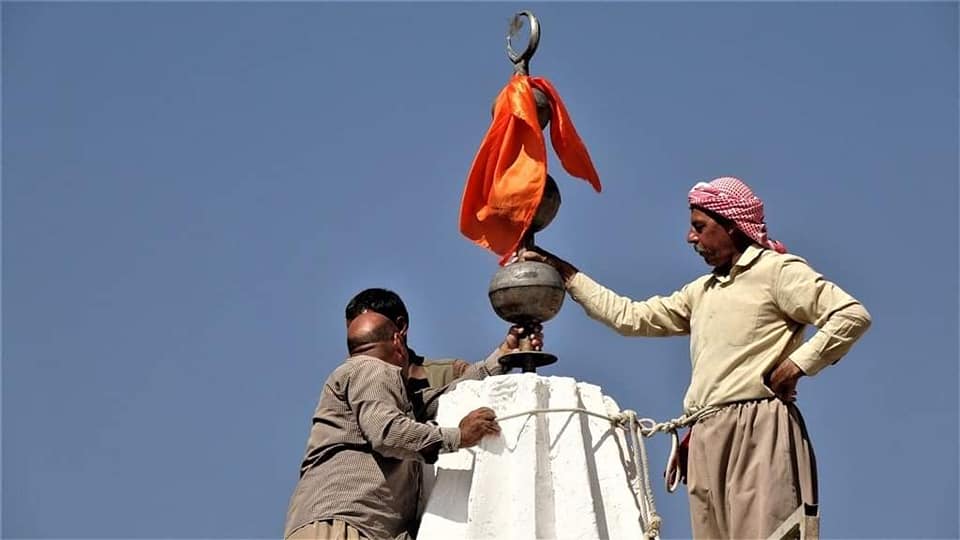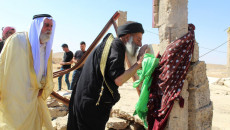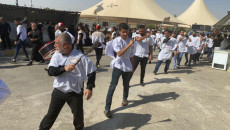Funding for the reconstruction of the destroyed Ezidi places of worship and shrines in Nineveh province is limited to donations from people and NGOs, as there is lack of government support even though three years has passed since the region was retaken from ISIS.
“After retaking the region from ISIS control, the reconstruction of the shrines gradually started either by NGOs or by donations from residents or the wealthy,” said the head of Ezidi Affairs Directorate of the Kurdistan Regional Government, Ja’far Samo.
“Members of ISIS destroyed all the shrines they could reach in the regions they managed to take control of in Shingal and Bashiqa in the Nineveh province. Around 68 Ezidi shrines have been recorded as destroyed,” Samo told KirkukNow.
The Ezidi shrines were destroyed by ISIS militants in 2014.
the destruction of the Ezidi religious sites was “a heavy and vicious blow on the heart of Ezidis
According to Samo, the destruction of the Ezidi religious sites was “a heavy and vicious blow on the heart of Ezidis,” since they have strong belief in them, and that it was a damage to their identity.
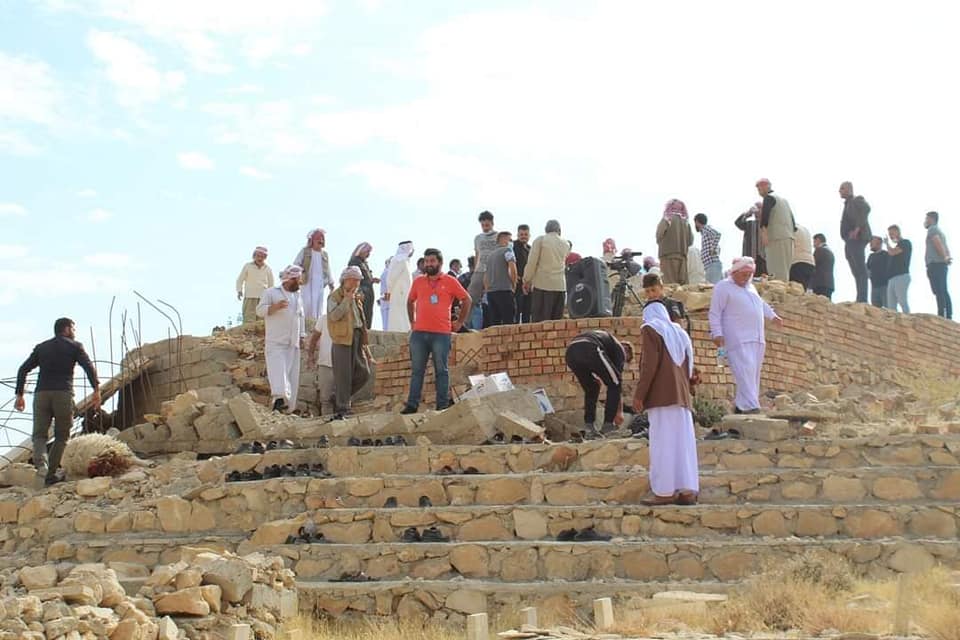
Absence of government assistance
Samo called on the Iraqi government to allocate funds for the reconstruction of the Ezidi shrines and temples.
On 10 December 2017 the Iraqi government declared that all of the country’s territories were cleared of ISIS.
Khayri Ali, head of the Ezidi Documentation Organization, also says that reconstruction of religious sites in Shingal has been done by donations and volunteers.
Ali’s organization itself has contributed to the reconstruction efforts.

The deputy governor of Nineveh for the affairs of the displaced, Ali Omar, said that most of the shrines in Bashiqa have been reconstructed by individual contributions, and that some of those in Shingal have been reconstructed by aid from NGOs like the Nadia Initiative and contribution from the Endowment Directorate.
“The government aid was through the Christian and Ezidi Endowments, by building roads to some shrines in Shingal.
The government aid was through the Christian and Ezidi Endowments, by building roads to some shrines in Shingal
Reconstruction by volunteers continues
The Ezidi Documentation Organization did not specify the number of the reconstructed shrines. “We continue in reconstructing the shrines. More shrines are being reconstructed from time to time, that’s why there is no accurate number,” Ali Omar said.
Nazik Barakat, an Ezidi activist from Shingal, says: “Most of the shrines that were restored from the stage of removing the rubble to the completion of reconstruction or restoration took place by individual efforts with funds collected from donations provided by the people."
She told KirkukNow that the Kurdistan Regional Government (KRG) has provided some funds for the renovation of the Sharafadin Shrine.
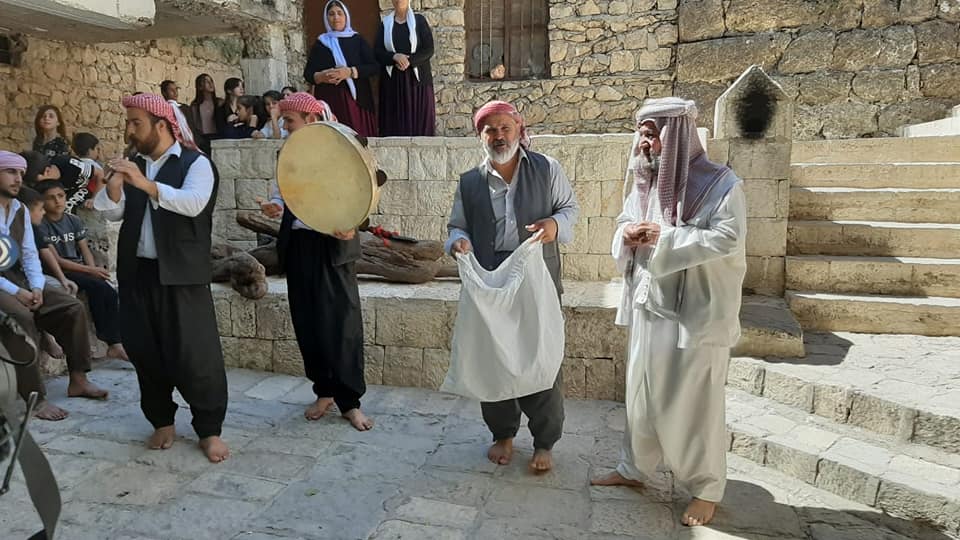
All Ezidi Shrines need renovation
Reconstruction operations are not limited to the destroyed Ezidi shrines, but rather includes all shrines, even those located within the borders of the Kurdistan Region, according to Samo.
“The Ezidi shrines in Kurdistan and Iraq in general need to be restored. We, as a department concerned with the affairs of the Ezidis, have called for the restoration of all the Ezidi shrines Iraqi Kurdistan in general, because the shrines need renovation every several years."
the Ezidi shrines Iraqi Kurdistan in general, because the shrines need renovation every several years
Even the Lalish Temple, the most sacred for Ezidis, was renovated by funds donated by the US embassy in Iraq.

